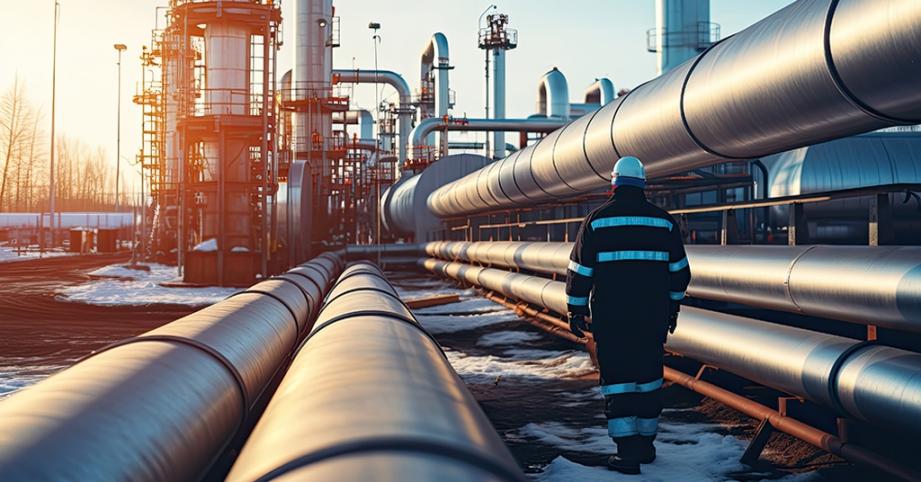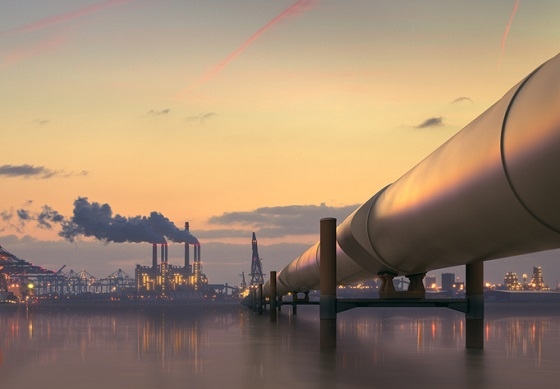Oil Pipes Demystified: Engineering, Functionality, and Maintenance
Oil pipes are crucial in industrial processes, ensuring the safe and efficient transport of oil and gas. Shenlong oil pipes stand out by adhering to API standards and undergoing 100% non-destructive testing, guaranteeing superior quality. With over 20 years of production experience and a global project footprint, our factory boasts an "experimental testing center" and a CNAS Laboratory Accreditation Certificate. We enforce strict quality control through dual inspection processes: on the production line and comprehensive post-production checks. Recognized by international certificates such as ISO, CE, and LR, we also support third-party testing by SGS and BV.

Engineering of Oil Pipes
Materials and Construction
- 1.Types of Materials Used
Oil pipes are predominantly crafted from robust materials such as steel, alloys, and composites. Steel, prized for its strength and reliability, is the most common choice. Alloys, blending metals for enhanced properties like resistance to high pressure or temperature, cater to specific needs. Composite materials, combining metals with non-metal elements, offer advantages such as corrosion resistance and reduced weight, ideal for specialized applications.
- 2.Construction Techniques
The construction of oil pipes employs various methods, notably seamless and welded approaches. Seamless pipes, extruded without seams, boast superior strength and uniformity. In contrast, welded pipes are formed by rolling and welding edges together, offering cost-efficiency with careful consideration of strength compared to seamless counterparts. Choosing the right technique hinges on application-specific requirements.
Design Considerations
- 1.Pressure Ratings and Safety Factors
Designing oil pipes revolves around ensuring robust pressure ratings and safety margins. Pipes must endure internal fluid pressures without compromise. Engineers meticulously calculate maximum operational pressures and incorporate safety factors to guarantee reliability across diverse conditions. Material selection and construction techniques are tailored to exceed requisite pressure thresholds.
- 2.Diameter and Wall Thickness Considerations
Critical to design, pipe diameter influences flow rates and capacity, while wall thickness directly impacts strength and resilience to internal and external pressures. Balancing these factors optimizes performance and safety. Thicker walls bolster pressure resistance albeit at increased cost and weight, whereas thinner options offer cost efficiency with potential durability trade-offs.
Specialized Engineering Aspects
- 1.Corrosion Resistance Strategies
Mitigating corrosion remains pivotal in oil pipelines. Strategies encompass deploying corrosion-resistant materials, applying protective coatings, and integrating cathodic protection systems. Routine inspections and maintenance are integral in forestalling corrosion, ensuring longevity and operational integrity.
- 2.Thermal Expansion and Contraction Management
Addressing thermal dynamics inherent to pipelines involves strategic solutions like expansion joints and flexible connectors. Thoughtful pipeline layout designs accommodate temperature-induced expansions and contractions, safeguarding against structural strain and ensuring uninterrupted operational continuity.
Functionality of Oil Pipes
Transportation of Oil
- 1.Role in Upstream and Downstream Operations
Oil pipes serve indispensable roles in upstream extraction and downstream distribution. Upstream, they transport crude oil from extraction sites to processing facilities. Downstream, they efficiently convey refined products to distribution points. Reliability and efficiency are paramount in sustaining continuous oil and gas flow throughout the supply chain.
- 2.Efficiency Considerations in Fluid Dynamics
Enhancing oil transportation efficiency hinges on optimizing fluid dynamics. Managing factors like pipe diameter, surface characteristics, and flow rates minimizes energy consumption while ensuring smooth fluid flow. Advanced engineering simulations and techniques play pivotal roles in achieving optimal pipeline efficiency.
Integration with Oil Production Systems
- 1.Connection to Pumps, Separators, and Storage Tanks
Seamless integration with key components of oil production systems—including pumps, separators, and storage tanks—is imperative for pipeline functionality. Well-designed connections and compatibility ensure consistent flow rates and pressure levels, mitigating risks associated with leaks and operational downtime.
- 2.Flow Rate Optimization and Pressure Management
Effective operation of oil pipelines necessitates meticulous flow rate optimization and pressure management. Utilizing control valves, pressure regulators, and advanced monitoring systems maintains desired flow dynamics and pressure thresholds. Proactive management safeguards pipeline safety and reliability, averting potential issues like overpressure or flow restrictions.
Maintenance of Oil Pipes
Routine Inspection Practices
- 1.Visual Inspections and Non-Destructive Testing (NDT)
Maintaining oil pipeline integrity begins with rigorous visual inspections and non-destructive testing (NDT). Visual inspections detect surface irregularities, while NDT methods such as ultrasonic testing, magnetic particle inspection, and radiography delve into subsurface flaws. Early detection through these methods prevents failures and safeguards pipeline reliability.
- 2.Monitoring for Leaks and Structural Integrity
Continuous monitoring for leaks and structural health is pivotal in oil pipeline maintenance. Advanced sensors and monitoring systems promptly detect leaks, enabling swift responses to mitigate environmental impacts and product losses. Regular structural assessments, including pressure testing and metal fatigue analysis, ensure pipelines endure operational demands without compromising safety.
Corrosion Control and Prevention
- 1.Coatings and Linings
Effective corrosion management entails applying robust coatings and linings. These protective layers shield pipeline metals from corrosive elements, prolonging their lifespan. Epoxy, polyurethane, and specialized polymer linings are commonly used for their superior resistance to chemical degradation and environmental stresses.
- 2.Cathodic Protection Systems
Implementing cathodic protection systems offers reliable corrosion prevention. Utilizing sacrificial anodes or impressed currents redirects corrosive processes away from pipeline metals. This method ensures long-term durability by preserving the integrity of critical pipeline infrastructure.
Repair and Rehabilitation Techniques
- 1.Pipe Wrapping and Sealing Methods
In response to damages, pipe wrapping and sealing techniques provide effective repairs. Composite wraps, epoxy sleeves, and clamp systems reinforce structures and seal leaks without disrupting pipeline operations. These methods minimize downtime and mitigate operational disruptions cost-effectively.
- 2.Replacement Strategies for Degraded Sections
Addressing severely degraded sections often necessitates strategic replacements. Identifying compromised segments and employing modern techniques like hot tapping and in-service welding facilitate seamless replacements while maintaining uninterrupted pipeline flow and operational efficiency.
Future Trends in Oil Pipe Technology
Predictions for Advancements in Materials and Construction Techniques
The future of oil pipe technology anticipates significant strides in materials and construction methodologies. Innovations in high-strength alloys, composite materials, and nano-coatings promise enhanced durability, corrosion resistance, and overall performance. These advancements are poised to reduce maintenance expenditures and extend pipeline lifespans, ensuring heightened reliability and efficiency in oil transportation networks.
Emerging Technologies in Pipeline Monitoring and Maintenance
Emerging technologies in pipeline monitoring and maintenance are poised to revolutionize industry practices. Smart sensors, real-time data analytics, and AI-driven predictive maintenance systems will provide unparalleled insights into pipeline conditions. These advancements enable proactive maintenance strategies, early detection of potential issues, and optimized operational protocols, fostering safer and more efficient oil pipeline management for the future.
In Closing
Oil pipes are integral to the efficient and safe transport of oil and gas in industrial processes. From the robust engineering involving high-quality materials and precise construction techniques to the meticulous maintenance practices like routine inspections and corrosion control, these pipelines are built for durability and reliability. The functionality of oil pipes ensures seamless integration with production systems and optimal fluid dynamics. As technology advances, future innovations in materials, construction, and monitoring systems promise even greater efficiency and longevity. Understanding these aspects demystifies oil pipes, highlighting their critical role and the sophisticated efforts behind their development and upkeep.






